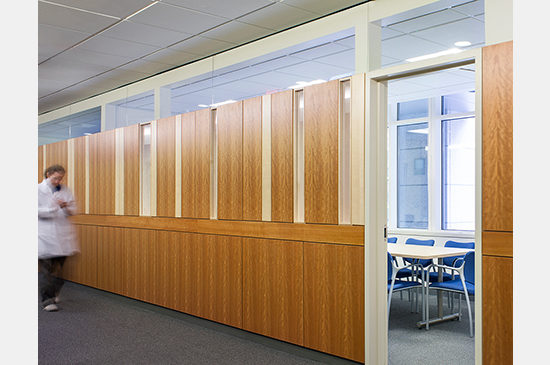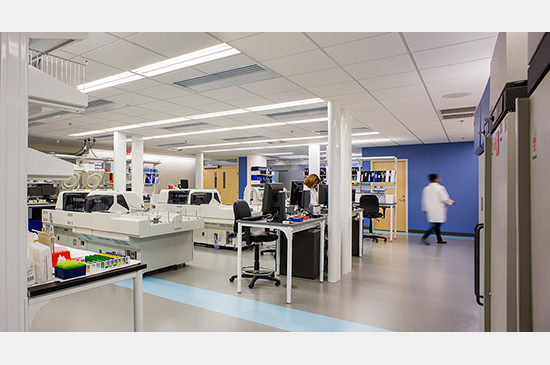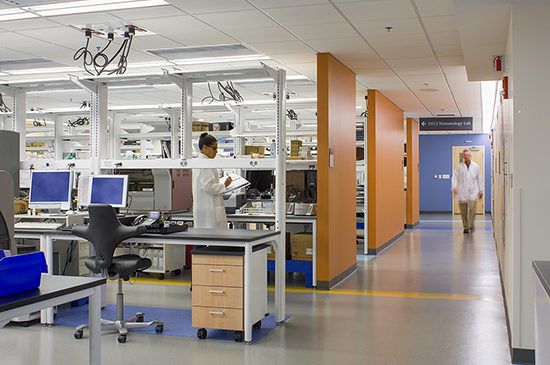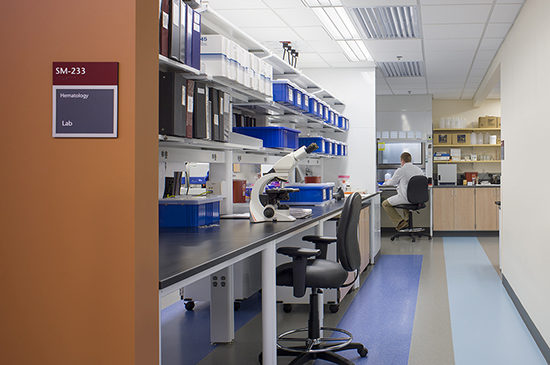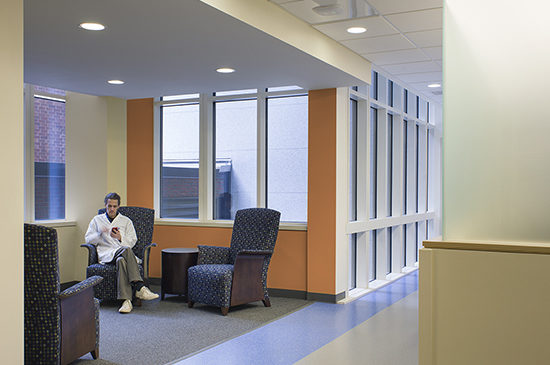
Since the inception of genomic-based clinical testing, many hospitals have relied upon outside private companies and larger academic research hospitals for their DNA based testing. Recent advancements in the field of personalized medicine have inspired urgency among hospitals to fully integrate gene targeted therapies into their core clinical laboratory testing. Integrating personalized medicine into the traditional clinical lab setting has become a top priority for many hospitals that have the potential to decrease healthcare costs by increasing diagnostic accuracy.
For cancer treatment, personalized medicine holds significant promise. Dana-Farber Cancer Institute in Boston is at the forefront of bringing their genomic research from the lab bench to the clinical setting. As part of this effort, Dana-Farber has completed a renovation to relocate their clinical lab on their campus within the Longwood Medical corridor in Boston. Dana-Farber’s new clinical lab space co-locates traditional oncology based hematology and chemistry labs with a combined molecular diagnostics and tissue typing lab.
Dana-Farber utilizes the services of their partner hospital, Brigham and Women’s Hospital (BWH), to provide molecular diagnostics and tissue typing testing. A key goal of the lab renovation project was to not only bring these services closer to Dana-Farber’s patients but to combine the separate molecular diagnostics and tissue typing labs into a single entity established specifically for cancer testing. In addition, Dana-Farber’s hemato-pathology offices were also located on the lab floor as a means to further unify the diagnostic process.
The conceptual design of the new clinical lab was largely informed by sample processing flow and critical adjacencies between related testing types. The plan layout was further driven by Dana-Farber’s desire to create an open, flexible lab that is capable of quickly implementing new testing technologies that may be on the horizon. The design team collaborated closely with the staff of both Dana-Farber and BWH to develop a space that could promote greater efficiency across testing modalities. Synergies between testing types were analyzed which led to the identification of shared instrumentation and resources. Recognizing that sample intake and accessioning is a vital part of clinical lab through-put; lab control was located at the center of the lab to ensure specimen flow is managed equally across all testing disciplines.
The new clinical lab at Dana-Farber balances a design approach that has traditionally been reserved for research labs with sensitivity towards process specific nature of clinical testing. Natural light, flexibility, thoughtful finishes, and opportunities for collaboration exist within a layout that has been optimized for safe and time sensitive diagnostics.


